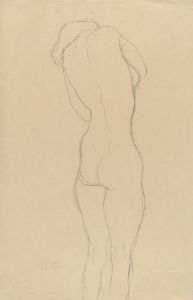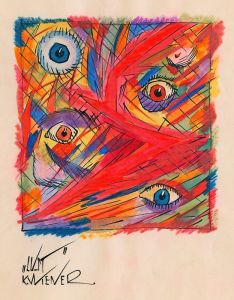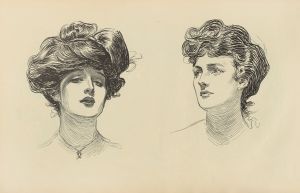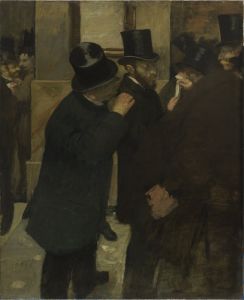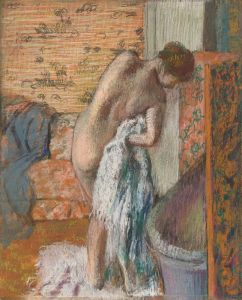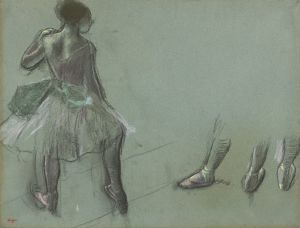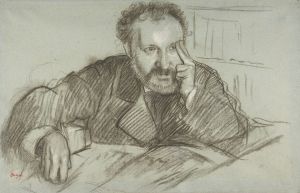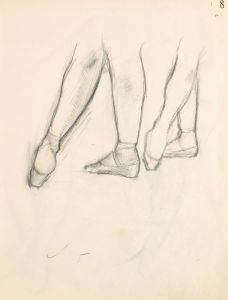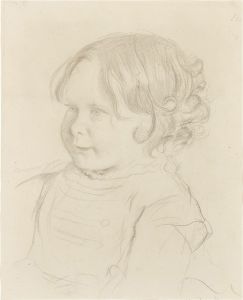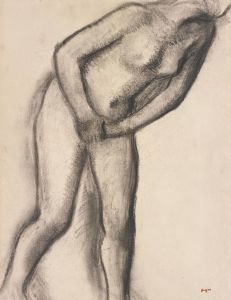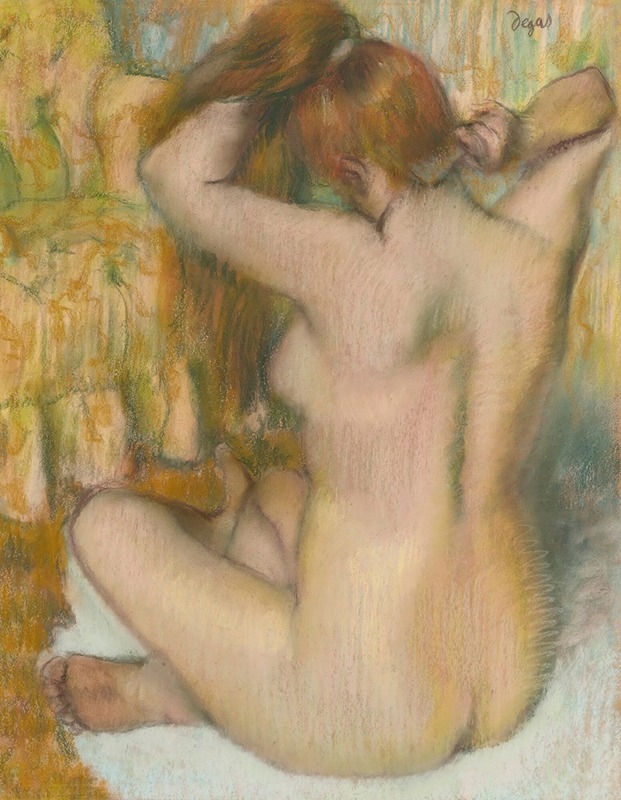
Femme nue, de dos, se coiffant
A hand-painted replica of Edgar Degas’s masterpiece Femme nue, de dos, se coiffant, meticulously crafted by professional artists to capture the true essence of the original. Each piece is created with museum-quality canvas and rare mineral pigments, carefully painted by experienced artists with delicate brushstrokes and rich, layered colors to perfectly recreate the texture of the original artwork. Unlike machine-printed reproductions, this hand-painted version brings the painting to life, infused with the artist’s emotions and skill in every stroke. Whether for personal collection or home decoration, it instantly elevates the artistic atmosphere of any space.
Femme nue, de dos, se coiffant (translated as Nude Woman, from Behind, Combing Her Hair) is a pastel artwork created by the French artist Edgar Degas. Degas, a prominent figure in the Impressionist movement, is renowned for his depictions of modern life, particularly his studies of the human form in intimate and everyday moments. This particular work exemplifies his fascination with the female figure and his mastery of pastel as a medium.
The artwork portrays a nude woman seen from behind, engaged in the act of combing her hair. The composition is intimate and unposed, capturing a private moment of self-care. Degas's choice to depict the subject from behind emphasizes the natural curves of the human body and allows the viewer to focus on the interplay of light, shadow, and texture. The use of pastel gives the piece a soft, tactile quality, with rich, layered colors that bring the figure to life. Degas was known for his innovative use of pastel, and this work is a testament to his ability to manipulate the medium to achieve both subtlety and vibrancy.
Degas often explored themes of women in domestic or personal settings, and this work is consistent with his broader body of work. Rather than idealizing his subjects, Degas sought to portray them with honesty and realism, capturing their movements and gestures in a way that feels both spontaneous and studied. His interest in the human form was deeply influenced by his background in classical art and his extensive studies of anatomy.
The exact date of creation for Femme nue, de dos, se coiffant is not definitively documented, but it is believed to have been produced during the late 19th century, a period when Degas was increasingly focused on pastel as his primary medium. This shift was partly due to his declining eyesight, which made it difficult for him to work with oil paints. Pastel allowed him to work more quickly and with greater immediacy, qualities that are evident in this piece.
The artwork is part of Degas's broader exploration of the female nude, a subject he returned to repeatedly throughout his career. His approach to the nude was often unconventional for his time, eschewing the idealized forms of academic art in favor of more naturalistic and candid depictions. This focus on realism and the everyday set Degas apart from many of his contemporaries and contributed to his lasting influence on modern art.
Today, Femme nue, de dos, se coiffant is recognized as an example of Degas's skill in capturing the subtleties of human form and movement. The piece is held in a private collection, and its exact provenance and exhibition history are not widely documented.





